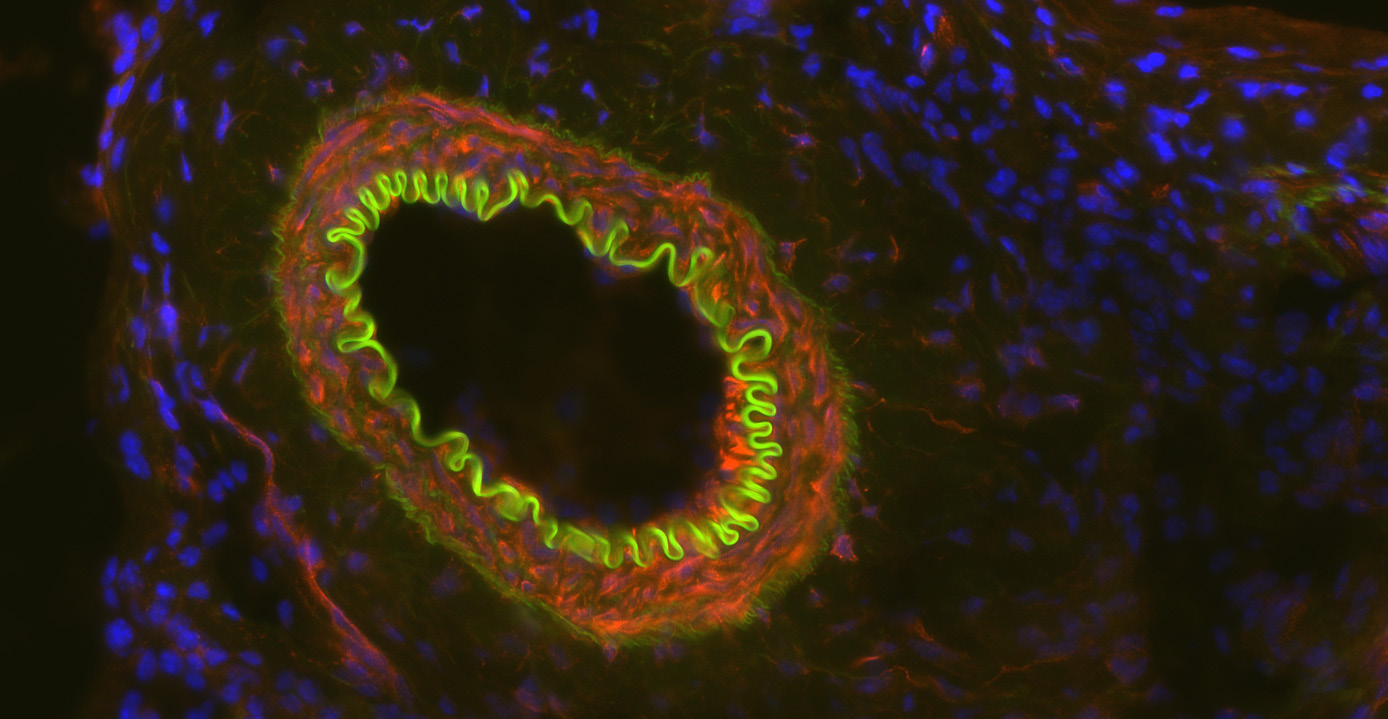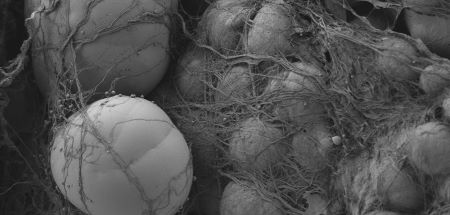Stem Cells: Getting Them Where They Need to Go

Many stem cell treatments are inefficient! Stem cells are cells that aren’t yet specialized, like blood or nerve cells. After being injected in suspension, most never make it to their targeted destination or never perform their desired function. Lauren Flynn works with fellow Bone and Joint Institue engineers, biologists, chemists, imaging scientists, clinicians and trainees on stem cell therapies to develop new strategies for soft tissue regeneration — designing better systems for preparing cells to maintain or enhance their regenerative capacity, as well as delivery systems to to maximize the cells’ potential.

Flynn’s research aims to harness the innate bioactivity of the extracellular matrix, the natural scaffold that surrounds cells within tissues
“Most of these treatment strategies are targeting conditions where there really isn’t a clinical alternative,” said Flynn. “I think in the long-term we can really improve people’s quality of life.”
Her team has successfully designed frameworks for directing cells towards fat, bone, cartilage, and most recently, tissues within the spine. By developing new therapies that strive to harness the capacity of regenerative cells to release helpful proteins, Flynn and her team are learning how to encourage new blood vessel formation and control the inflammatory response.
Flynn believes a lot of her success is a direct result of the collaborations she’s formed at Western through the Bone and Joint Institute – a place she described as having an authentic appreciation of transdisciplinary research, working together across disciplines to gain new perspectives and build on knowledge from different theoretical frameworks and approaches.
“People are not just paying lip service to collaborating [at the Bone and Joint Institute], they’re actually working together,” she said.
It’s one of the reasons she came to Western from Queen’s to further advance her career. Passionate about applying knowledge, Flynn started her post-secondary journey in biomedical engineering programs. “I’ve always liked to problem solve,” Flynn said. “[Biomedical Engineering] allows me to combine that sort of applied thinking and design with my love of biology.”
Fast forward to now, six years later, and Flynn has been promoted to full professor, jointly appointed at the Schulich School of Medicine and Dentistry and the Faculty of Engineering.
of what you’re working towar d s when you start your academic c a r e e r , so it is rewarding to have t h a t achievement,” said Flynn. “I think it’s a recognition that your work has made an impact at an international level.”
Flynn has achieved remarkable success in directing her own research lab and received tenure status shortly after arriving at Western University in 2014. She was recently inducted into the Royal Society of Canada’s College of New Scholars, has patented some of her work and has received several impressive research grants, including the Bone and Joint Institute’s Catalyst Grant for early-stage projects that led to further grants from the Ontario Institute for Regenerative Medicine.
Flynn enjoys mentoring in the Bone and Joint Institute Collaborative Training Program in Musculoskeletal Health Research. She encourages all her graduate students to participate in the program to diversify their training and experience, and many of her trainees have benefited from its impactful transdisciplinary training awards. A lover of nurturing students’ talents, she said seeing what they go on to accomplish is very fulfilling.
“I feel very fortunate to be a part of this community, to have a great group of trainees and a great group of collaborators and other colleagues here at Western,” said Flynn.
Flynn said she hopes the Bone and Joint Institute continues to bring people together in new and interesting ways to advance science and impact.

